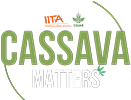Ritu Maanzi, from Kisamwene in Butiama provided his land for the ACAI Nutrient Omission Trial (NOT) during the 2017 cropping season. This was the first time he had cassava in his farm after more than a 5-year hiatus due to what he termed a fruitless endeavour with cassava in the past.
When the ACAI team from the Lake Zone visited to harvest the trial plots, the yield from some of the treatments did not escape his attention.
“The treatments occupied a small part of my farm, but the yield from the plots is far much more than any previous harvest I have gotten from this land,” Manzi said.
The 46-year-old father of five was swamped with orders and requests for planting materials from his farm by his neighbours. The curious fellow farmers engaged ACAI team at the site to get more information on how to improve cassava farming.
In Butiama and Serengeti areas of the Lake Zone in Tanzania, cassava root yield spiked to as much as 17 roots per plant with an estimated average yield of between 25-30 t/ha. This was especially in NPK treatments witnessed across all clusters in the region.
Cassava yields from ACAI field trials have debunked doubts about how cassava would perform in response to fertilizer application. The crop performance and yields from treatments in trials that ran during the 2017 cropping season have been self-evident on how the root crop performed under different growth conditions and agronomic practices.
The remarkable visual distinction of roots per plant and weight across different fertilizer treatments on trial plots have been indicative of how fertilizer influences cassava performance. This has not gone unnoticed by cassava farmers within ACAI project sites.
According to Dr Simon Jeremiah from the Lake Zone Agricultural Research and Development Institute, farmers around the ACAI trial plots have expressed interest in the treatments that promise the most yields with others offering their plots for trials in the new cropping season.
“Our trials have performed very well, even in places where we had heavy rains and we expected minimal results, ” Dr Jeremiah said.
ACAI is running trials that will provide data for modelling and development of six use cases: best planting practices, site specific fertilizer recommendation, best fertilizer blends for cassava growers, high starch content, best intercropping practices, and scheduled planting and harvesting.
The project runs trials applying different treatments on several trial plots against control plots within the cropping location.
From Nigeria, Dr Adeyemi Olojede from the National Root Crops Research Institute (NRCRI), Umudike, has witnessed a growing interest in the agronomic practices being carried out on ACAI trials even before the crops were harvested.
“The basal fertilizer application leads to almost 98% crop establishment, we have robust crops from a very good canopy that prevents weeds. When farmers see these plots they want to know how it is done to adopt the method,” Dr Olojede explained.
The recorded yield from harvest is only one of the steps in the process of evaluating how cassava has performed under different treatments. Comprehensive results from the analyses will form the basis for recommendation of optimum fertilizer blends and best agronomic practices to get the most out of cassava cultivation. In 2018, ACAI together with development partners from Nigeria and Tanzania will be working on validation trials and dissemination of the decision support tools to the end users.
